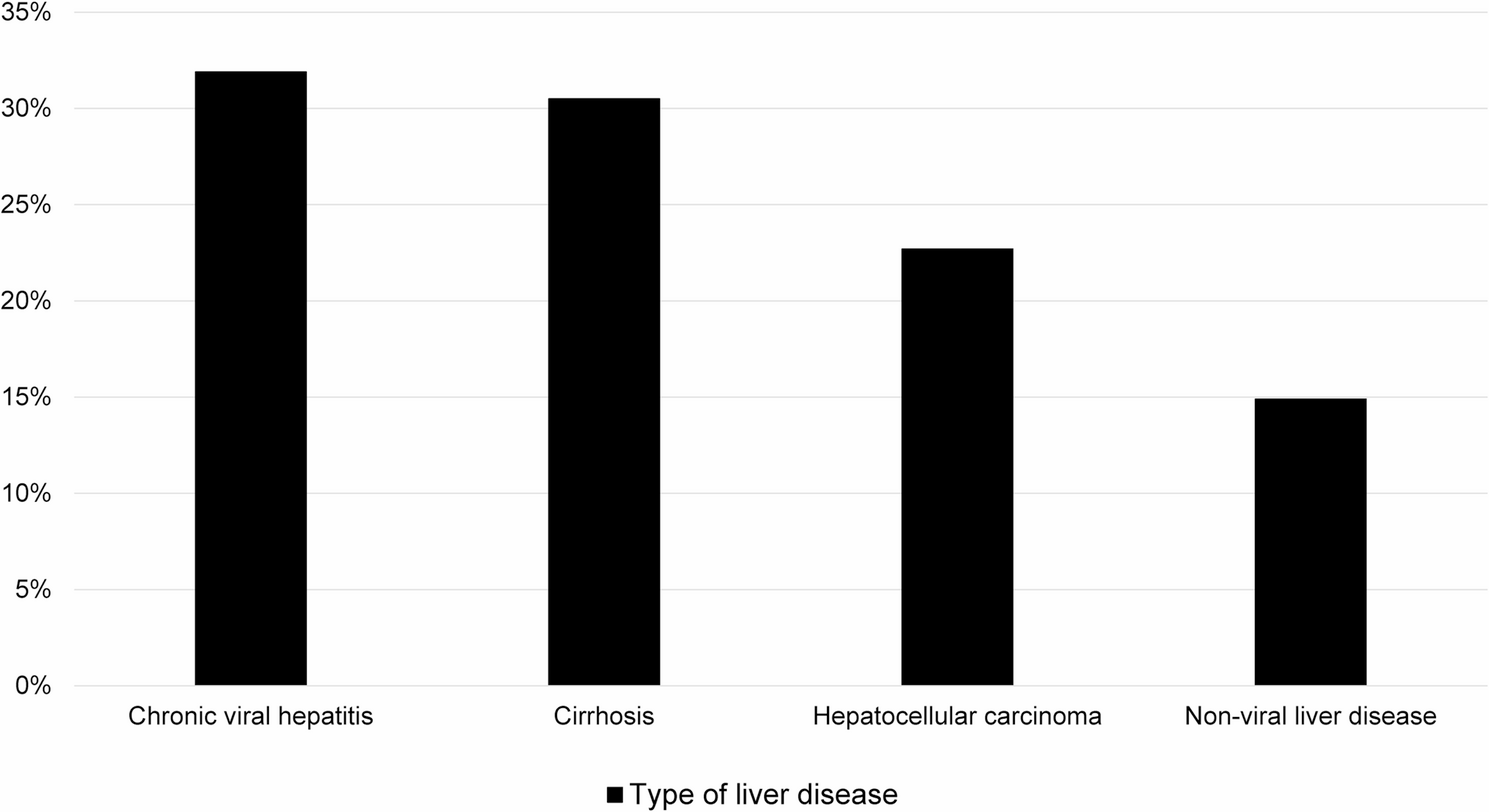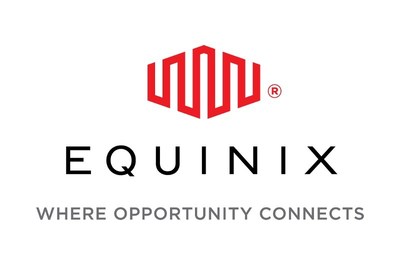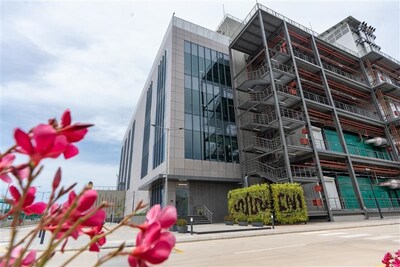Introduction
Staphylococcus aureus (S. aureus), a Gram-positive coccus, is a prevalent commensal organism colonizing the cutaneous and mucosal surfaces of both humans and animals. However, S. aureus can become a significant cause of serious hospital-acquired infections, such as pneumonia, bloodstream infections, and infective endocarditis.1,2 The increasing use of antimicrobial agents has driven the selection and spread of drug-resistant S. aureus strains, with methicillin-resistant S. aureus (MRSA) representing a critical public health threat.3 Globally, MRSA strains are now endemic in hospital-associated (HA-MRSA), community-associated (CA-MRSA), and livestock-associated (LA-MRSA) settings, creating substantial clinical and public health challenges.4
MRSA strains resist antibiotics by acquiring the mecA gene. This gene encodes the penicillin-binding protein 2a (PBP2a). PBP2a reduces binding affinity for β-lactams antibiotics and prevents these drugs from effectively disrupting bacterial cell wall synthesis.5 Studies showed that MRSA infections are a major factor driving high mortality rates in hospital settings.6–8 Healthcare institutions in different countries reported that MRSA accounts for over 50% S. aureus isolated from clinical samples.9 The US Centers for Disease Control and Prevention (CDC) estimates that MRSA infections kill 10,600 people in the US each year, with direct medical costs exceeding US$1.7 billion.10 The 2024 data from China’s Antimicrobial Resistance Surveillance Network (CHINET) showed that S. aureus accounts for 9.1% of total clinical detections, ranking it among the top three clinical pathogens. Notably, the MRSA detection rate rose from 28.7% in 2022 to 29.2% in 2024. A comparative analysis of 29,539 methicillin-sensitive S. aureus (MSSA) and 11,729 MRSA isolates revealed significantly higher resistance rates in MRSA to almost all tested antimicrobial agents, except for trimethoprim–sulfamethoxazole (MRSA 6.7% vs MSSA 11.9%). MRSA exhibited high resistance to erythromycin (76.4%) and clindamycin (53.8%), along with moderate resistance to levofloxacin (25.6%), ciprofloxacin (25.4%), gentamicin (12.3%), and fosfomycin (6.8%). In contrast, all MRSA isolates remained fully susceptible to vancomycin, norvancomycin, linezolid, teicoplanin, tigecycline, and rifampin.11 Differences in MRSA resistance occur across regions and can be influenced by factors such as population density, intensity of antimicrobial use, and the availability of healthcare resources.12–14
In this context, the present study analyzes the distribution and susceptibility of antimicrobial resistance in S. aureus isolates from two tertiary Grade A hospitals in Shanghai: the Shanghai Municipal Hospital of Traditional Chinese Medicine (STCMH), which specializes in traditional Chinese medicine (TCM), and the Shanghai General Hospital (SGH), which focuses on Western medicine. Our analysis covered the period from 2014 to 2023 to identify the clinical characteristics and resistance patterns of S. aureus, particularly MRSA. These findings provide valuable insights to optimize antimicrobial stewardship and help mitigate the spread of resistant strains.
Material and Methods
Study Design
This study analyzed S. aureus isolates from both outpatient and inpatient departments of two tertiary Grade A hospitals in Shanghai over the period from January 2014 to December 2023 (Figure 1). Clinical data were retrospectively collected, covering patient demographics (age and gender), infection sites, pre-treatment blood test results [including C-reactive protein (CRP), complete blood count parameters (white blood cell (WBC) count, lymphocyte count, neutrophil%, lymphocyte%, monocyte%, eosinophil%, basophil%, hemoglobin (Hb), red blood cell count (RBC), hematocrit (HCT), platelet count (PLT), mean corpuscular volume (MCV), mean corpuscular hemoglobin (MCH), mean corpuscular hemoglobin concentration (MCHC), red cell distribution width (RDW), mean platelet volume (MPV), platelet distribution width (PDW), plateletcrit (PCT), absolute neutrophil count (ANC), absolute monocyte count, eosinophil count, basophil count) and derived ratios (neutrophil-to-lymphocyte ratio (NLR), platelet-to-lymphocyte ratio (PLR), lymphocyte-to-monocyte ratio (LMR)], isolate’s characteristics, antimicrobial susceptibility profiles, treatment details (including specific note of synergistic therapy combining antibiotics and TCM), and post-treatment bacterial clearance status. Among all enrolled patients, 259 cases received antibiotic monotherapy and 546 cases received combination therapy with TCM and antibiotics. Clinical outcomes, including bacterial clearance rates, were compared between the groups. Data were extracted using the WHONET 5.3 database and electronic medical records and resulted in the inclusion of 805 patients diagnosed with S. aureus infections. The present research received approval from the Ethics Committee of Shanghai Municipal Hospital of Traditional Chinese Medicine (2025SHL-KY-26-01) and was conducted in accordance with the Declaration of Helsinki. Informed consent was waived due to the retrospective nature of the cohort study.
|
Figure 1 Study design flowchart. A 10-year retrospective cohort study comparing antimicrobial resistance patterns between Shanghai Municipal Hospital of Traditional Chinese Medicine (STCMH) and Shanghai General Hospital (SGH).
Abbreviations: STCMH, Shanghai Municipal Hospital of Traditional Chinese Medicine; SGH, Shanghai General Hospital.
|
Bacterial Identification and Antimicrobial Susceptibility Testing
Isolates were cultured and purified following standard microbiological protocols. Species identification and antimicrobial susceptibility testing were performed using the VITEK-2 Compact automated system (bioMérieux, France). Antibiotics tested included: penicillin (PEN), oxacillin (OXA), erythromycin (ERY), clindamycin (CLI), ciprofloxacin (CIP), levofloxacin (LVX), moxifloxacin (MXF), gentamicin (GEN), trimethoprim/sulfamethoxazole (SXT), rifampicin (RIF), vancomycin (VAN), linezolid (LZD) and quinupristin/dalfopristin (Q/D). S. aureus ATCC 29213 served as the quality control strain. Testing procedures followed the Clinical and Laboratory Standards Institute (CLSI) guidelines15 and the manufacturer’s instructions. Resistance rates were calculated using the formula: Resistance rate (%) = (Number of resistant isolates / Total tested isolates) × 100. Microbiological clearance was assessed based on culture results and complete clearance was defined as a negative bacterial culture following treatment. Total clearance rate was calculated as: Total clearance rate (%) = (Number of cleared cases / Total cases) × 100.15
MRSA Detection
MRSA was defined per CLSI criteria:15 cefoxitin disk diffusion inhibition zone diameter ≤21 mm or an oxacillin minimum inhibitory concentration (MIC) ≥4 μg/mL. An oxacillin MIC of ≤2 μg/mL defined MSSA.
Development and Validation of a Bacterial Clearance Prediction Model
We used LASSO (Least Absolute Shrinkage and Selection Operator) regression combined with univariate logistic analysis to screen for independent predictors of bacterial clearance in patients infected with S. aureus. A multivariate logistic regression model was developed and represented through a nomogram. The model’s ability to discriminate was assessed by calculating the area under the receiver operating characteristic (ROC) curve (AUC) and the calibration curve assessed the alignment between predicted probabilities and actual clearance rates.
Statistical Analysis
We used WHONET 5.3 for preliminary screening of isolate distribution and resistance rates. We then performed in-depth analysis with R 4.2.1 and SPSS 24.0. Categorical data were expressed as frequencies (percentages) and comparisons between groups were analyzed using the χ²-test or Fisher’s exact test. The Cochran-Armitage trend test analyzed the temporal trends in resistance rates. All statistical tests were two-tailed, with a significance threshold set at α=0.05 (P<0.05).
Results
Distribution of S. Aureus and Changing Trends of MRSA in Two Hospitals
From 2014 to 2023, STCMH collected a total of 2,714 S. aureus isolates and SGH obtained 7102 samples. SGH recorded an annual S. aureus growth rate of 4.20% and STCMH presented a decline over the same period (Table 1).
 |
Table 1 Annual Distribution of Clinical Isolates of Staphylococcus Aureus in STCMH and SGH From 2014 to 2023
|
The analysis of clinical samples revealed that sputum and wound secretions were the most prevalent, representing 67.18% and 20.24% of the samples in STCMH (Figure 2A), and 76.70% and 8.84% from SGH (Figure 2B). Other notable sample types included blood (5.06% in STCMH and 1.79% in SGH), urine (2.72% in STCMH and 6.52% in SGH), pus (2.83% in STCMH and 2.00% in SGH), and alveolar lavage fluid (1.17% in STCMH and 1.04% in SGH), as shown in Figure 2A and B.
 |
Figure 2 Distribution of specimen sources, clinical departments, and patient age groups of Staphylococcus aureus isolates from STCMH and SGH. Source and proportion of total culture specimens. Proportions of S. aureus isolates from different specimen types in STCMH and SGH. Sputum accounted for the highest proportion in both hospitals (A and B). Distribution of isolates among departments. The intensive care unit (ICU) and surgical departments were the primary sources of S. aureus isolates in both hospitals. At STCMH, the top three departments were ICU (27.40%), Surgery (12.02%), and Emergency Medicine (11.33%), while SGH showed a higher concentration in ICU (40.79%) and Surgery (31.58%), with Respiratory Medicine as the third most common source (2.53%) (C). Age distribution of the S. aureus infected population. Comparison of age groups (0–18, 19–64, and ≥75 years) among S. aureus-infected patients. Elderly patients (≥75 years) composed the largest proportion in both hospitals (D).
Abbreviations: STCMH, Shanghai Municipal Hospital of Traditional Chinese Medicine; SGH, Shanghai General Hospital; S. aureus, Staphylococcus aureus.
|
At STCMH, the Department of Intensive Care Medicine (ICU) had the highest number of isolates (798, 27.40%), followed by Surgery (350, 12.02%), and Emergency Medicine (330, 11.33%). Neurology (237, 8.14%), Hematology (177, 6.08%), and Oncology (129, 4.43%) had fewer isolates. In SGH, the ICU had the most isolates (2897, 40.79%), followed by Surgery (2243, 31.58%), and Respiratory Medicine (Pulmonology) (180, 2.53%). The distribution of S. aureus across the various wards is illustrated in Figure 2C.
Figure 2D shows S. aureus infections primarily affected elderly patients (≥75 years) in both hospitals. However, SGH had a significant lower proportion of these patients compared to STCMH (42.97% vs 53.98%, P < 0.01). Furthermore, SGH had a higher percentage of infected patients aged 19–64 years than in STCMH (36.55% vs 21.11%, P < 0.01) (Figure 2D). Infections among children and adolescents (0–18 years) were more frequent in SGH and three times that of STCMH (1.37% vs 3.91%, P < 0.01) (Figure 2D).
From 2014 to 2023, MRSA detection differed between STCMH and SGH. STCMH experienced an upward trend from 46.80% in 2014 to 67.70% in 2017, where rates decreased from 66.40% in 2018 to 56.90% in 2021. These rates culminated in a significant drop to 33.30% in 2023. SGH showed a relatively stable increase from 54.79% to 61.24% during the period between 2014 and 2016 followed by a decline between 2017 (56.30%) and 2019 (48.80%). SHG then displayed a notable increase from to 71.63% by 2021, followed by a period of relative stability around 67.80% to 69.00% through 2023 (Figure 3).
 |
Figure 3 Trends in MRSA detection rates (2014–2023). Annual MRSA detection rates (%) in STCMH and SGH. STCMH showed a significant decline after 2017, while SGH exhibited persistent high rates (Cochran-Armitage trend test, P <0.05).
Abbreviations: STCMH, Shanghai Municipal Hospital of Traditional Chinese Medicine; SGH, Shanghai General Hospital.
|
Antimicrobial Resistance Profiles of S. Aureus From Two Hospitals
Table 2 shows high resistance rates among S. aureus isolates from SGH that exceeded 50% for several antibiotics: penicillin G (PEN, 91.00%), erythromycin (ERY, 66.42%), clindamycin (CLI, 63.50%), and levofloxacin (LVX, 57.27%). MRSA accounted for a significant portion of these isolates (4,369, 61.5%) and MSSA represented a smaller fraction (1086, 15.3%). Furthermore, SGH-derived MRSA isolates exhibited high resistance to ERY (84.37%), CLI (82.76%), LVX (80.75%), moxifloxacin (MXF, 65.03%), and gentamicin (GEN, 58.78%). Conversely, S. aureus isolates from STCMH showed comparatively lower resistance for PEN (70.12%), ERY (65.55%), CLI (60.83%), and LVX (49.48%). MRSA accounted for 1,550 (57.1%) of these STCHM isolates and MSSA totaled 619 (22.8%). STCMH-derived MRSA samples presented a higher resistance to ERY (87.68% vs 84.37%, P <0.01) and MXF (74.26% vs 65.03%, P <0.01) and a lower resistance to LVX (76.71% vs 80.75%, P < 0.01) compared to SGH MRSA samples. Isolates from both hospitals exhibited low resistance rates (below 5.0%) for rifampicin (RIF), linezolid (LZD), vancomycin (VAN), and quinupristin/dalfopristin (Q/D) (Figure 4).
 |
Table 2 Comparison of Staphylococcus Aureus and MRSA Antimicrobial Susceptibility Between STCMH and SGH
|
 |
Figure 4 Comparison of the resistance rates of S. aureus and MRSA in STCMH and SGH. (A), Comparison of the resistance rates of S. aureus. SGH showed higher resistance rates than STCMH for penicillin (PEN), levofloxacin (LVX), moxifloxacin (MXF) and gentamicin (GEN); (B), Comparison of the resistance rates of MRSA. STCMH MRSA exhibited higher resistance to erythromycin (ERY) and moxifloxacin (MXF) compared to SGH, whereas SGH had a higher levofloxacin (LVX) resistance rate.
Abbreviations: STCMH, Shanghai Municipal Hospital of Traditional Chinese Medicine; SGH, Shanghai General Hospital; PEN, penicillin; ERY, erythromycin; CLI, clindamycin; CIP, ciprofloxacin; LVX, levofloxacin; MXF, moxifloxacin; GEN, gentamicin; SXT, trimethoprim/sulfamethoxazole; RIF, rifampicin; VAN, vancomycin; LZD, linezolid; Q/D, quinupristin/dalfopristin.
Notes: *Statistical significance: P<0.05.
|
Susceptibility for Antibiotic
Figure 5 shows that both hospitals experienced a decline in antibiotics resistance. At SGH, S. aureus exhibited high levels of resistance to multiple antibiotics. S. aureus resistance to RIF increased from 3.40% in 2014 to 4.80% in 2023 (P < 0.05). However, resistance decreased for ERY (69.80% to 61.60%; P <0.05), GEN (48.60% to 35.40%; P <0.05), and SXT. In STCMH, resistance rates declined for PEN, ERY, CLI, LVX, GEN, SXT, and RIF (P <0.05) after 2016. Both hospitals reported no resistance to LZD, Q/D, and VAN, indicating their continued effectiveness (Figure 5). Both hospitals observed a decline in MRSA resistance. SGH presented a decrease in resistance rates for ERY, CLI, LVX, MXF, and GEN, while RIF resistance rose from 3.90% to 6.90% (P <0.05). MRSA resistance to ERY, CLI, LVX, MXF, GEN, SXT, and RIF declined (P <0.05) in STCMH. Resistance rates for VAN, LZD, and Q/D remained low and stable across isolates from both hospitals (Figure 5).
 |
Figure 5 Antibiotic resistance patterns of S. aureus and MRSA isolates from STCMH and SGH.
Abbreviations: STCMH, Shanghai Municipal Hospital of Traditional Chinese Medicine; SGH, Shanghai General Hospital; MRSA, Methicillin-resistant Staphylococcus aureus; S. aureus, Staphylococcus aureus.
|
Clinical Efficacy Analysis
This study included 805 patients infected with S. aureus with complete clinical and follow-up data. We randomly allocated these patients to a training cohort (n=563, 70%) and a validation cohort (n=242, 30%), as detailed in Supplementary Table 1. Lasso regression was used to screen the predictive variables. As the penalty coefficient lambda (λ) increased, the penalization effect on variable selection intensified, causing the coefficients of non-relevant variables to approach zero. Through analysis indicated that a λ value of 0.042 provided the optimal accuracy for the Lasso regression model, with the results of variable selection shown in Figure 6A and B. The combination of univariate logistic analysis with LASSO regression for dimensionality reduction allowed four variables from 37 candidate predictors for stepwise screening: synergistic therapy combining antibiotics and TCM, WBC, lymphocyte number (Lym) and CRP (Figure 6C). The predictive formula for assessing bacterial clearance in S. aureus-infected patients was derived as follows: Z=−0.708 + 0.916 (Therapy Combining Antibiotics and TCM) −0.005 (CRP) + 0.04 (WBC) + 0.225 (Lym).
 |
Figure 6 The cross-validation plot for Lasso regression. LASSO coefficient profiles for 37 candidate predictors of bacterial clearance (A). At lambda = 0.042, four variables (synergistic antibiotic-TCM therapy, WBC, lymphocyte count, and CRP) were retained for model construction (B). Histogram of the coefficients of the selected features (C). Nomogram predictive model for evaluating bacterial clearance of S. aureus. This clinical decision tool integrates four independent predictors: synergistic antibiotic-TCM therapy (combination treatment), WBC count, lymphocyte levels, and CRP concentration. Each variable is assigned a weighted score on the scale; the cumulative total score corresponds to the predicted probability of successful bacterial eradication. Higher total scores indicate greater likelihood of microbiological clearance, supporting personalized therapeutic strategies for S. aureus infection management (D). Coefficient stability analysis of the bacterial clearance model. AUCs of the prediction models (E), DCA curve based on the training group (F), DCA curve based on the validation group (G).
Abbreviations: LASSO, Least Absolute Shrinkage and Selection Operator; TCM, Traditional Chinese Medicine; WBC, White Blood Cell; CRP, C-Reactive Protein; AUC, Area Under the Curve; DCA, Decision Curve Analysis.
|
Predictive Model for Bacterial Clearance
A nomogram predictive model was developed using the identified variables to estimate the probability of bacterial clearance in S. aureus-infected patients (Figure 6D). To calculate the total score, the scores of the identified risk factors are summed, and the corresponding value is located on the risk axis. The resulting value represents the probability of bacterial clearance for S. aureus. The model’s discriminatory power was evaluated using the receiver operating characteristic (ROC) curve, with the area under the curve (AUC) quantifying predictive accuracy. The ROC curve analysis revealed that the constructed nomogram prediction model achieved an AUC of 0.654 (95% CI: 0.609–0.699) (Figure 6E). The DCA results indicated that the nomogram provides a high clinical net benefit, as illustrated in Figure 6F and G.
Discussion
Antimicrobial resistance (AMR) poses a major public health threat in the 21st century, significantly impacting society and the economy. Staphylococcus aureus remains a leading cause of infections and deaths in both hospitalized and outpatients across developing countries.16,17 The World Health Organization’s Global Antimicrobial Resistance and Use Surveillance System (GLASS) 2021 report indicated a 33.3% detection rate of MRSA in low- and middle-income countries. This rate exceeds the 15.0% prevalence reported in high-income countries across 109 participating nations and regions.18 A systematic review and meta-analysis covering 16 African countries19 showed a 4.1% MRSA carriage rate among healthy community residents. This prevalence is 2.05 times higher than the Centers for Disease Control and Prevention (CDC) estimates for the general US population (2%).20 Furthermore, the study found a concerning 13.6% MRSA carriage rate among healthcare workers in Africa, exceeding the 1.8% pooled prevalence among healthcare workers in Europe and the United States.21 The Global Research on Antimicrobial Resistance (GRAM) Project analyzed trends in antimicrobial resistance (AMR) from 1990 to 2021 and projected a significant global health impact through 2050 across 204 countries and territories. In 2021, MRSA caused 130,000 deaths, a 127% surge from the 57,200 fatalities it caused in 1990, establishing it as the fastest-growing AMR (antimicrobial resistance) threat. The persistent high mortality of AMR in low- and middle-income countries is driven by systemic challenges, including unequal distribution of medical resources, inadequate ICU facilities, shortages of healthcare workers, and limited microbiological diagnostic capabilities.22 The emergence of MRSA during the 1990s led to improvements in both clinical hospitals and community healthcare facilities, along with the implementation of infection control strategies to prevent nosocomial transmission.23 Furthermore, the ST8 (USA300 clone) strain, responsible for community outbreaks in the United States from the late 1990s to the early 2000s, rapidly became the dominant CA-MRSA clone in North America. This strain exhibits mecA-mediated methicillin resistance and often carries genetic factors such as erm and msrA, which confer cross-resistance to macrolides, tetracyclines, and other antibiotics.24 A multicenter study found that CC59-ST59-t437-IV, CC8-ST239-t030-III, and CC5-ST5-t2460-II strains are the predominant MRSA clones in China, although their prevalence varies across different administrative divisions.25
Multiple surveillance datasets showed a significant decline in MRSA infection rates in US healthcare facilities from 2005 to 2012.26 This reduction has been attributed to improvements in surveillance, infection prevention, and control practices, and responsible antibiotic stewardship.27 MRSA detection rates in China have steadily declined in recent years, falling from 36% in 2014 to 28.9% in 2022. However, detection rate climbed to 30.0% in 2024.11 In the present study, both SGH and STCMH hospitals reported MRSA detection rates exceeding the national average. Furthermore, the SGH hospital presented persistent high MRSA infection rates, displaying an initial decline followed by an upward trajectory with accelerated growth in later phases. The STCMH showed an initial increase in MRSA detection rates of 56.8% in 2018 to 66.4% in 2022, followed by a significant reduction to 33.3% in 2023. This decline may be associated to improved infection control measures implemented at the TCM hospital, which includes rigorous hygiene and disinfection protocols. Meanwhile, MRSA strains isolated from both SGH and STCMH showed significantly higher resistance rates to multiple antibiotics—including erythromycin, clindamycin, levofloxacin and gentamicin—compared to the national average.11
The present study examined S. aureus and MRSA resistance rates in a Western medicine hospital and a traditional Chinese medicine hospital from 2014 to 2023. Both hospitals recorded MRSA detection rates higher than the national average, but STCMH showed a steeper decline in these rates. Furthermore, resistance rates to multiple antibiotics decreased in both hospitals, with STCMH achieving a greater reduction. This study innovates by providing the first comparative analysis of MRSA detection and resistance patterns between Western medicine and TCM hospitals, revealing STCMH’s advantages in controlling MRSA resistance. These findings offer new insights for clinical treatment and serve as critical references for optimizing antibiotic use and infection control measures. Two main factors explain these differences. First, patient characteristics. STCMH prioritize patients with chronic diseases and undergoing rehabilitation, as they often have longer stays but require fewer invasive interventions, which may reduce MRSA infection risks. Conversely, SGH focuses on acute and postoperative patients who frequently undergo invasive interventions, inherently increasing MRSA transmission risks. Second, antibiotic use. Certain natural compounds from plants exhibit synergistic effects with antibiotics to target MRSA.28 STCMH’s strategy of combining traditional Chinese and Western medicines is more effective to manage MRSA infections and reduce the need for antibiotics. This integrated approach reduces the development of antibiotic-resistant bacteria. The heavy reliance on broad-spectrum antibiotics in SGH, particularly during the COVID-19 pandemic (2020–2023), raised concerns about overuse and potential acceleration of MRSA dissemination. The combined use of herbal medicine and antibiotics may improve therapeutic efficacy, leading to shorter antibiotic courses and decrease antibiotic dosage. Data from Taxifulati et al29 found that the integrative use of TCM with antibiotic therapy (AeTCMs) in China increased from 4.07 daily defined doses per 1000 inhabitants per day (DID) in 2011 to 6.82 DID by 2015. This represents a 13.75% annual growth rate. Antibiotic consumption during the same period showed a smaller increase, from 7.97 DID to 10.08 DID, with a 4.81% annual growth rate.30 This difference suggests that antimicrobial stewardship policies might be influencing a shift, with increased AeTCM utilization and offsetting antibiotic use. This may be due to the synergistic or complementary benefits of AeTCM in managing infection.
This study investigated the predictors of bacterial clearance in S. aureus infections using real-world clinical data to develop a predictive model for initial treatment efficacy. LASSO regression identified four independent predictors: combined antibiotic and TCM therapy, WBC, lymphocyte count, and CRP levels. The combined antibiotic and TCM therapy significantly improved treatment success. However, elevated CRP levels decreased the likelihood of bacterial clearance, reflecting its value as a marker for inflammatory damage. The model presented moderate predictive performance (AUC = 0.654), suggesting its potential as an adjunctive tool for clinical risk stratification. Limitations, such as sample size, retrospective data bias, and the absence of critical host immune markers, prevent its use for individualized precision prediction at this time. Future research will focus on prospective, multi-center validation, and the identification of additional biomarkers to improve predictive accuracy.
The combination of TCM and antibiotic therapy for treating S. aureus, especially drug-resistant strains like MRSA, has become a prominent area of research.28 This approach aims to improve antibiotic efficacy, reduce the emergence of resistance, and mitigate antibiotic side effects through synergistic interactions between herbal components and antibiotics.31 While real-world evidence supports the clinical utility of combining TCM with antibiotics for treating Staphylococcus aureus infections, this study has several inherent limitations. First, the retrospective design introduces risks of unmeasured confounders. Additionally, potential sampling bias due to uneven isolate distribution and the restriction to Shanghai-based samples limit the generalizability of the findings to other regions. Second, the absence of molecular typing data impedes the discrimination between clonal transmission dynamics and spontaneous resistance mutations, thereby obscuring strain-specific epidemiological patterns. Third, incomplete documentation of treatment parameters—such as antibiotic dosing, TCM formulation compositions, and pharmacokinetic interactions—compromises a quantitative assessment of therapeutic synergy. To address these limitations, the following steps should be undertaken in subsequent research: First, in vitro time-kill assays and murine infection models need to be employed to investigate the mechanisms of action of selected TCM monomers and their synergistic effects with antibiotics. Second, large-scale, multicenter randomized controlled trials (RCTs) need to be conducted across various regions using standardized TCM–antibiotic combination regimens to evaluate clinical efficacy and examine the resistance profiles of different bacterial clonal lineages to various antibiotics. Third, a comprehensive cost-effectiveness analysis also requires to be performed to compare integrated TCM–antibiotic therapy with current standard care, quantifying key clinical and economic outcomes including duration of hospitalization, healthcare costs, and rates of antibiotic resistance development.
In summary, our real-world study reveals that STCMH outperformed SGH in reducing MRSA detection rates and antimicrobial resistance. This success appears attributable to STCMH’s optimized infection control practices and the integration of TCM with Western medical approaches. Furthermore, our findings suggest that the combined analysis of antibiotic treatment with TCM usage, WBC, CRP levels, and lymphocyte count holds potential as a predictive tool for bacterial clearance in S. aureus-infected patients.
Abbreviations
AMR, Antimicrobial Resistance; AUC, area under the ROC curve; AZM, azithromycin; CA-MRSA, community-acquired methicillin-resistant Staphylococcus aureus; CDC, Centers for Disease Control and Prevention; CHINET, China Antimicrobial Resistance Surveillance Network; CIP, ciprofloxacin; CLI, clindamycin; CLSI, Clinical and Laboratory Standards Institute; CRP, C-reactive protein; DRSA, daptomycin-resistant Staphylococcus aureus; ERY, erythromycin; GEN, gentamicin; HA-MRSA, hospital-acquired methicillin-resistant Staphylococcus aureus; hVISA, heterogeneous vancomycin-intermediate Staphylococcus aureus; LA-MRSA, livestock-associated methicillin-resistant Staphylococcus aureus; LASSO, least absolute shrinkage and selection operator; LRSA, linezolid-resistant Staphylococcus aureus; LZD, linezolid; LVX, levofloxacin; mecA, methicillin resistance gene; MCV, mean corpuscular volume; MIC, minimum inhibitory concentration; MRSA, methicillin-resistant Staphylococcus aureus; MSSA, methicillin-susceptible Staphylococcus aureus; MXF, moxifloxacin; msrA, macrolide-streptogramin B resistance gene; NorA, norfloxacin resistance efflux pump; OXA, oxacillin; PBP2a, penicillin-binding protein 2a; PEN, penicillin; Q/D, quinupristin/dalfopristin; RCT, randomized controlled trial; RIF, rifampicin; ROC, receiver operating characteristic; SXT, trimethoprim/sulfamethoxazole; TCM, traditional Chinese medicine; STCMH, Shanghai Municipal Hospital of Traditional Chinese Medicine; VAN, vancomycin; VISA, vancomycin-intermediate Staphylococcus aureus; VRSA, vancomycin-resistant Staphylococcus aureus; SGH, Shanghai General Hospital.
Data Sharing Statement
All data used to support the findings of this study are available from the corresponding author on request.
Ethics Approval and Consent to Participate
This study was approved by the Ethics Review Committee of the Shanghai Municipal Hospital of Traditional Chinese Medicine (2025SHL-KY-26-01). The Ethics Review Committee of the Shanghai Municipal Hospital of Traditional Chinese Medicine has waived the requirement for informed consent because this is a retrospective analysis, all personally identifiable information has been anonymized to protect patient privacy, and there were no additional interventions or risks to participants in this study. All procedures were performed in accordance with the 1964 Declaration of Helsinki and its later amendments.
Author Contributions
All authors made a significant contribution to the work reported, whether that is in the conception, study design, execution, acquisition of data, analysis and interpretation, or in all these areas; took part in drafting, revising or critically reviewing the article; gave final approval of the version to be published; have agreed on the journal to which the article has been submitted; and agree to be accountable for all aspects of the work.
Funding
This work was supported by the National Natural Science Foundation of China [82172281], the Cultivation Project for Medical Technology Doctoral Degree Program of Shanghai City (2021–2023).
Disclosure
The authors declare no competing interests in this work.
References
1. Turner NA, Sharma-Kuinkel BK, Maskarinec SA, et al. Methicillin-resistant Staphylococcus aureus: an overview of basic and clinical research. Nat Rev Microbiol. 2019;17(4):203–218. doi:10.1038/s41579-018-0147-4
2. Galfo V, Tiseo G, Riccardi N, Falcone M. Therapeutic drug monitoring of antibiotics for methicillin-resistant Staphylococcus aureus infections: an updated narrative review for clinicians. Clin Microbiol Infect. 2025;31(2):194–200. doi:10.1016/j.cmi.2024.08.021
3. Lakhundi S, Zhang K. Methicillin-resistant Staphylococcus aureus: molecular characterization, evolution, and epidemiology. Clin Microbiol Rev. 2018;31(4):e00020–18. doi:10.1128/CMR.00020-18
4. Pal M, Abdeta T, Regassa T, Zende R. Methicillin-resistant Staphylococcus aureus (MRSA) remains a major threat to public health. Am J Public Health Res. 2024;12(3):48–53. doi:10.12691/ajphr-12-3-2
5. Lade H, Kim J-S. Molecular determinants of β-Lactam resistance in methicillin-resistant Staphylococcus aureus (MRSA): an updated review. Antibiotics. 2023;12(9):1362. doi:10.3390/antibiotics12091362
6. Klein EY, Jiang W, Mojica N, et al. National costs associated with methicillin-susceptible and methicillin-resistant Staphylococcus aureus hospitalizations in the United States, 2010–2014. Clin Infect Dis. 2019;68(1):22–28. doi:10.1093/cid/ciy399
7. Willekens R, Puig-Asensio M, Suanzes P, et al. Mortality in Staphylococcus aureus bacteraemia remains high despite adherence to quality indicators: secondary analysis of a prospective cohort study. J Infect. 2021;83(5):656–663. doi:10.1016/j.jinf.2021.10.001
8. Bai AD, Ckl L, Komorowski AS, et al. Staphylococcus aureus bacteraemia mortality: a systematic review and meta-analysis. Clin Microbiol Infect. 2022;28(8):1076–1084. doi:10.1016/j.cmi.2022.03.015
9. Stefani S, Chung DR, Lindsay JA, et al. Meticillin-resistant Staphylococcus aureus (MRSA): global epidemiology and harmonisation of typing methods. Int J Antimicrob Agents. 2012;39(4):273–282. doi:10.1016/j.ijantimicag.2011.09.030
10. Miller WR, Arias CA. ESKAPE pathogens: antimicrobial resistance, epidemiology, clinical impact and therapeutics. Nat Rev Microbiol. 2024;22(10):598–616. doi:10.1038/s41579-024-01054-w
11. China Antimicrobial Surveillance Network. CHINET 2024. Available from: https://www.chinets.com/Data/AntibioticDrugFast. Accessed August 27, 2025.
12. Vestergaard M, Frees D, Ingmer H. Antibiotic resistance and the MRSA problem. Microbiol Spectr. 2019;7(2):10. doi:10.1128/microbiolspec.GPP3-0057-2018
13. Mahjabeen F, Saha U, Mostafa MN, et al. An update on treatment options for methicillin-resistant Staphylococcus aureus (MRSA) bacteremia: a systematic review. Cureus. 2022;14(11):e31486. doi:10.7759/cureus.31486
14. Brown NM, Goodman AL, Horner C, Jenkins A, Brown EM. Treatment of methicillin-resistant Staphylococcus aureus: updated guidelines from the UK. J Antimicrob Chemother. 2021;76(1):1–18. doi:10.1093/jac/dkab036
15. Clinical and Laboratory Standards Institute (CLSI). Performance Standards for Antimicrobial Susceptibility Testing. 34th Informational Supplement. Wayne, PA: CLSI; 2024.
16. Jee Y, Carlson J, Rafai E, et al. Antimicrobial resistance: a threat to global health. Lancet Infect Dis. 2018;18(9):939–940. doi:10.1016/S1473-3099(18)30471-7
17. Antimicrobial Resistance Collaborators. Global burden of bacterial antimicrobial resistance in 2019: a systematic analysis. Lancet. 2022;399(10325):629–655. doi:10.1016/S0140-6736(21)02724-0
18. WHO. Global antimicrobial resistance and use surveillance system (GLASS) report: 2021; 2021. Available from: https://www.who.int/publications/i/item/9789240027336. Accessed September 18, 2025.
19. Azzam A, Khaled H, Fayed HM, et al. Prevalence, antibiogram, and risk factors of methicillin-resistant Staphylococcus aureus (MRSA) asymptomatic carriage in Africa: a systematic review and meta-analysis. BMC Infect Dis. 2025;25(1):505. doi:10.1186/s12879-025-10819-4
20. Clinical overview of methicillin-resistant Staphylococcus aureus (MRSA). in healthcare settings MRSA CDC. Available from: https://www.cdc.gov/mrsa/hcp/clinical-overview/index.html. Accessed 24, April, 2025.
21. Dulon M, Peters C, Schablon A, Nienhaus A. MRSA carriage among healthcare workers in non-outbreak settings in Europe and the United States: a systematic review. BMC Infect Dis. 2014;14:363. doi:10.1186/1471-2334-14-363
22. GBD 2021 Antimicrobial Resistance Collaborators. Global burden of bacterial antimicrobial resistance 1990–2021: a systematic analysis with forecasts to 2050. Lancet. 2024;404(10459):1199–1226. doi:10.1016/S0140-6736(24)01867-1
23. Popovich KJ, Aureden K, Ham DC, et al. SHEA/IDSA/APIC practice recommendation: strategies to prevent methicillin-resistant Staphylococcus aureus transmission and infection in acute-care hospitals: 2022 update. Infect Control Hosp Epidemiol. 2023;44(7):1039–1067. doi:10.1017/ice.2023.102
24. Benvenga V, Cuénod A, Purushothaman S, et al. Historic methicillin-resistant Staphylococcus aureus: expanding current knowledge using molecular epidemiological characterization of a Swiss legacy collection. Genome Med. 2024;16(1):23. doi:10.1186/s13073-024-01292-w
25. Wang B, Xu Y, Zhao H, et al. Methicillin-resistant Staphylococcus aureus in China: a multicentre longitudinal study and whole-genome sequencing. Emerg Microbes Infect. 2022;11(1):532–542. doi:10.1080/22221751.2022.2032373
26. Kourtis AP, Hatfield K, Baggs J, et al. Vital signs: epidemiology and recent trends in methicillin-resistant and in methicillin-susceptible Staphylococcus aureus bloodstream infections – United States. MMWR Morb Mortal Wkly Rep. 2019;68(9):214–219. doi:10.15585/mmwr.mm6809e1
27. Coia JE, Wilson JA, Bak A, et al. Joint Healthcare Infection Society (HIS) and Infection Prevention Society (IPS) guidelines for the prevention and control of meticillin-resistant Staphylococcus aureus (MRSA) in healthcare facilities. J Hosp Infect. 2021;118S:S1–S39. doi:10.1016/j.jhin.2021.09.022
28. Chen S, Zhi Z, Wong WL, Yuan W, Sun N. Understanding the synergistic sensitization of natural products and antibiotics: an effective strategy to combat MRSA. Eur J Med Chem. 2025;281:117012. doi:10.1016/j.ejmech.2024.117012
29. Taxifulati Y, Zhou Y, Han S, et al. Trends of consumption and expenditure of antibacterial traditional Chinese medicine in secondary and tertiary hospitals in China: an analysis of pharmaceutical sales data, 2011–2015. J Chin Pharm Sci. 2022;31(4):298–307.
30. Wushouer H, Tian Y, Guan XD, Han S, Shi LW. Trends and patterns of antibiotic consumption in China’s tertiary hospitals: based on a 5 year surveillance with sales records, 2011–2015. PLoS One. 2017;12:e0190314. doi:10.1371/journal.pone.0190314
31. Sadeer NB, Mahomoodally MF. Antibiotic potentiation of natural products: a promising target to fight pathogenic bacteria. Curr Drug Targets. 2021;22(5):555–572. doi:10.2174/1389450121666200924113740

















